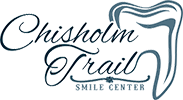Dental bridges are one of the most common restorative dentistry treatments, used to replace one or more missing teeth. These restorations are composed of several dental crowns fused together to fill in the gap in your smile. Bridges can renew your oral function, improve your appearance, and reduce the risk of further dental complications. When you receive a dental bridge, you will have several types to choose from.
At Chisholm Trail Smile Center, Dr. Matthew Bridges offers complete restorative dentistry. Our Duncan, OK, office proudly offers multiple types of dental bridges, including implant-supported restorations. Thanks to our CEREC® intraoral scanner, our bridges fit comfortably and have a beautifully lifelike appearance.
To learn more about the different types of dental bridges and to find out which type is right for you, schedule a consultation with us today.
Traditional Bridges
When people refer to a dental bridge, they are most commonly talking about a traditional bridge. Traditional bridges are made with two abutment teeth, crowns that fit over the teeth flanking the gap in your smile. One or more artificial teeth, or pontics, fit inside the space left by the missing teeth. To place a traditional bridge, Dr. Bridges will need to reshape the teeth that will support the restoration.
Traditional bridges are very durable. One study found that 98% of bridges last at least five years, while 95% last 12 to 20 years.
Maryland Dental Bridges
Maryland bridges are sometimes called “resin bonded bridges.” Instead of using pontics, these restorations have two metal wings on either side of the artificial tooth. Dr. Bridges will use resin to bond these wings to the back of your adjacent teeth.
Maryland bridges are a more conservative treatment and do not require alteration to your teeth. They also have a similar lifespan to traditional bridges. However, they are only appropriate to replace front teeth, since they are not strong enough to withstand the force of your bite on your back teeth.
Cantilever Bridges
A cantilever bridge is similar to a traditional bridge, except that it only has one abutment tooth. This type of restoration may be appropriate if you only have one healthy tooth adjacent to your missing tooth.
At the same time, cantilever bridges are not as secure as traditional bridges and are used only in limited circumstances. Dentists often use them to replace front teeth, as the force of your bite may be too strong in the back.
Implant-Supported Dental Bridges
Implant-supported dental bridges are quickly emerging as the number one tooth replacement option. Instead of resting on your adjacent teeth, these restorations sit on top of implant posts, which are surgically placed in your jawbone.
Implant-supported bridges do not require alteration of otherwise healthy teeth. Moreover, the implant posts can prevent jawbone degeneration and further tooth loss.
Find Out Which Type of Dental Bridge Is Right for You
If you are missing teeth, there’s no reason to suffer from embarrassment and discomfort. Contact Chisholm Trail Smile Center to schedule your restorative consultation. You can get in touch online or call us at 580-255-4880.







